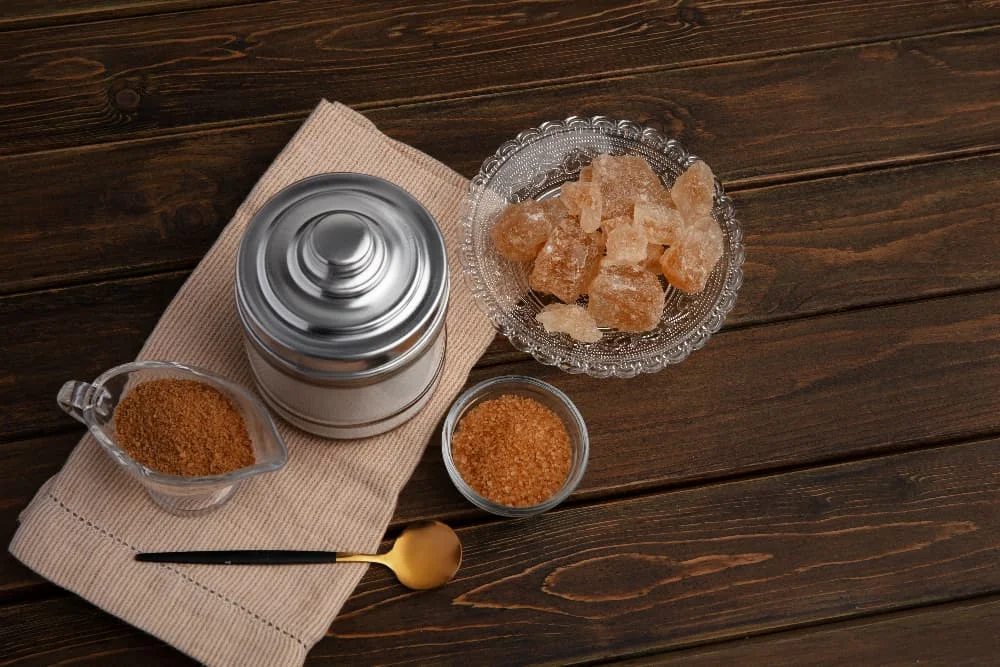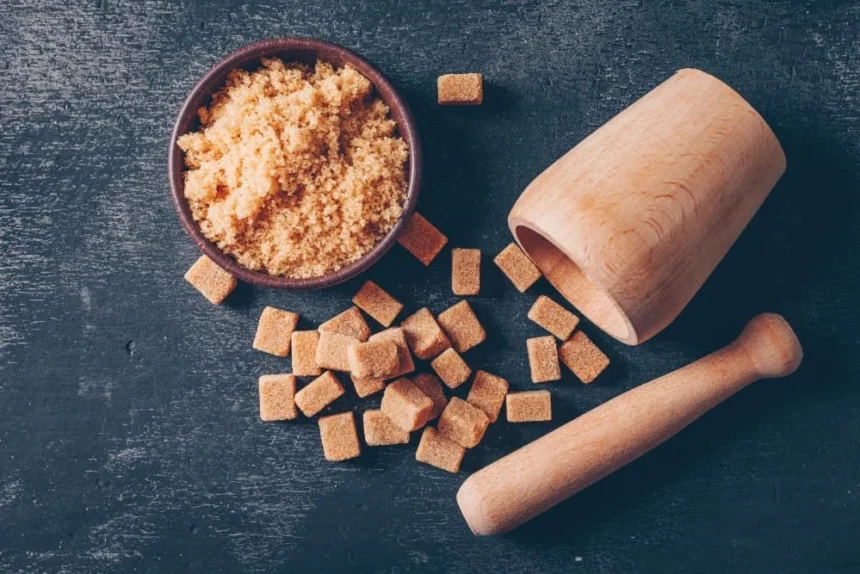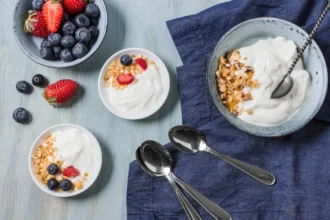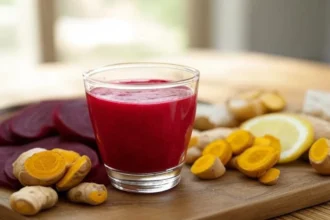Brown sugar adds a rich sweetness and molasses depth to baked goods and savory dishes. But what if you run out in the middle of a recipe? No need to panic—there are plenty of healthy brown sugar substitutes that work just as well, and some might even become your new favorite sweeteners.
This guide explores the best alternatives, from pantry staples like maple syrup and honey to lesser-known options like date sugar and muscovado. Learn how each replacement works and how to use them effectively in your cooking and baking.
Make Your Own Brown Sugar Substitute
No brown sugar? No problem! With just two simple ingredients—granulated white sugar and molasses—you can create a homemade alternative in minutes.
Ingredients:
✔ 1 cup white sugar
✔ 1 tablespoon molasses (for light brown sugar)
✔ 2 tablespoons molasses (for dark brown sugar)
Instructions:
1️⃣ Mix: Combine the sugar and molasses in a bowl.
2️⃣ Blend: Stir thoroughly with a fork or whisk until evenly mixed.
3️⃣ Store: Keep in an airtight container at room temperature to prevent drying.
💡 Pro Tips:
🔹 Adjust sweetness: Add more molasses for a deeper flavor.
🔹 Use a food processor: For a smoother consistency, blend the sugar and molasses together.
🔹 Fix lumps: Sift through a fine-mesh sieve if needed.
This DIY brown sugar substitute works perfectly in recipes that call for traditional brown sugar, maintaining the same moisture and caramel-like sweetness.
Best Replacements for Brown Sugar
Running out of brown sugar? No worries! These alternatives can deliver similar sweetness, texture, and depth to your recipes. Here’s a breakdown of the best substitutes, including their flavor, texture, and how to use them effectively.

1. Maple Syrup 🍁
A natural sweetener with a rich, caramel-like taste.
- Flavor: Sweet, with warm caramel and woody undertones.
- Texture: Liquid, which adds moisture to baked goods.
- How to Use: Substitute ¾ cup of maple syrup for 1 cup of brown sugar and reduce other liquids slightly.
- Health Benefits: Contains antioxidants and minerals but should be used in moderation.
2. Fruit Purees (Applesauce, Mashed Banana) 🍏🍌
A natural way to sweeten recipes while keeping them moist.
- Flavor: Mild fruitiness, which works well in baked goods.
- Texture: Moist, similar to brown sugar’s effect in baking.
- How to Use: Use ¾ cup of fruit puree per 1 cup of brown sugar, reducing other liquids.
- Health Benefits: High in fiber and vitamins, with naturally occurring sugars.
3. Coconut Sugar 🥥
A close match to brown sugar in taste and texture.
- Flavor: Rich, caramel-like, slightly nutty.
- Texture: Granulated, slightly coarser than brown sugar.
- How to Use: Swap 1:1 for brown sugar.
- Health Benefits: Retains some minerals but is still a form of sugar.
4. Honey 🍯
A liquid sweetener with a floral depth.
- Flavor: Sweet, with floral and warm undertones.
- Texture: Thick and syrupy, similar to brown sugar’s moisture content.
- How to Use: Use ¾ cup of honey per 1 cup of brown sugar, reducing liquids.
- Health Benefits: Contains antioxidants and antibacterial properties but is calorie-dense.
5. Agave Nectar 🌵
A mild, neutral liquid sweetener.
- Flavor: Light sweetness without overpowering flavors.
- Texture: Smooth, liquid consistency.
- How to Use: Use ¾ cup of agave nectar per 1 cup of brown sugar, reducing other liquids.
- Health Benefits: High in fructose, best used in moderation.
6. Date Sugar 🌴
A whole-food sweetener made from dried dates.
- Flavor: Caramel-like sweetness with mild fruitiness.
- Texture: Granulated, though slightly drier than brown sugar.
- How to Use: Replace 1:1 for brown sugar.
- Health Benefits: High in fiber and antioxidants.
7. Brown Rice Syrup 🍚
A subtle alternative with mild sweetness.
- Flavor: Light sweetness with nutty undertones.
- Texture: Thick, syrupy consistency.
- How to Use: Use ¾ cup of brown rice syrup per 1 cup of brown sugar, reducing other liquids.
- Health Benefits: Provides complex carbohydrates but is still a sweetener.
8. Stevia 🍃
A zero-calorie alternative that’s much sweeter than sugar.
- Flavor: Very sweet, with a slight aftertaste.
- Texture: Powdered or liquid.
- How to Use: Follow package instructions (typically much less than a 1:1 ratio).
- Health Benefits: No impact on blood sugar, but lacks brown sugar’s depth.
9. Muscovado Sugar 🍂
The closest match to brown sugar, with deep molasses flavor.
- Flavor: Strong molasses taste, nearly identical to brown sugar.
- Texture: Moist, sticky, and granulated.
- How to Use: Substitute 1:1 for brown sugar.
- Health Benefits: Retains some minerals but is still a form of sugar.
10. Monk Fruit Sweetener 🍈
A zero-calorie alternative that mimics sugar’s sweetness.
- Flavor: Sweet, clean taste without molasses depth.
- Texture: Powdered or liquid.
- How to Use: Follow package instructions (much sweeter than sugar).
- Health Benefits: No blood sugar impact, making it a diabetic-friendly option.
11. Yacon Syrup 🥄
A natural, low-glycemic liquid sweetener.
- Flavor: Mild, slightly fruity sweetness.
- Texture: Thick and syrupy.
- How to Use: Use ¾ cup of yacon syrup per 1 cup of brown sugar, reducing other liquids.
- Health Benefits: Contains prebiotic fiber and is lower in calories than most sweeteners.
Which Brown Sugar Substitute Is Best for You?
Each alternative has unique qualities, so the best choice depends on your recipe and dietary preferences.
- For baking: Muscovado sugar or coconut sugar offer the closest match.
- For liquid-based recipes: Maple syrup, honey, or agave nectar work well.
- For a healthier option: Fruit purees, monk fruit, or stevia provide sweetness with added benefits.
Now you have plenty of options to choose from! Which one will you try first? 😊
Choosing the Best Brown Sugar Replacement
Picking the right brown sugar substitute depends on your recipe, desired sweetness, and dietary needs. Follow these tips to ensure the best match for your dish:
1. Match the Substitute to the Recipe
- Baking (Cookies, Cakes, Muffins): Use dry options like coconut sugar, muscovado sugar, or granulated sugar with molasses for a close match in taste and texture.
- Sauces & Marinades: Liquid alternatives like maple syrup, honey, or agave nectar enhance flavor while providing the necessary sweetness.
- No-Bake Desserts: Fruit purees (like mashed banana or applesauce) work well, adding natural sweetness and moisture without needing heat.
2. Adjust the Amount for Proper Consistency
- Liquid Sweeteners (Maple Syrup, Honey, Agave): Reduce other liquids in the recipe slightly to prevent a runny texture.
- Dry Substitutes (Coconut Sugar, Date Sugar): Typically work 1:1, but adjust slightly based on sweetness preference.
- Low-Calorie Sweeteners (Stevia, Monk Fruit): Follow package instructions, as they’re much sweeter than sugar.
3. Consider Dietary Needs & Allergies
- For low-glycemic options: Opt for monk fruit, stevia, or yacon syrup to minimize blood sugar spikes.
- For vegan choices: Stick with maple syrup, agave nectar, or fruit purees instead of honey.
- For food allergies: Ensure the substitute is safe (e.g., avoiding honey for those with allergies).
Find Your Perfect Substitute!
By considering your recipe and preferences, you can choose the best brown sugar replacement while maintaining great taste and texture. Experiment with different options to find your favorite—your next dish might just turn out even better than expected! 🍪✨






